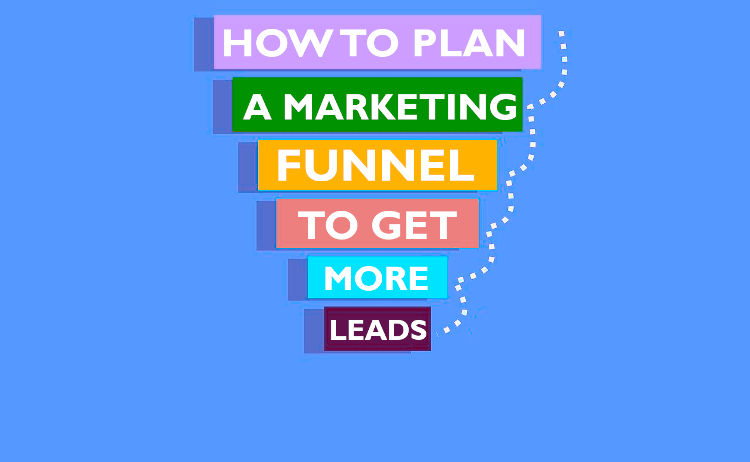How to Plan a Marketing Funnel to Get More Leads
So you have a product and a plan on how to sell it, but have you sat down to plan a marketing funnel?
Are you looking for ways to attract new leads and refill your sales funnel? If so, you may be exploring different approaches to marketing, including social media advertising. However, before you execute any marketing strategy for your business, you’ll want to have an end goal in mind and understand how your marketing efforts will move your prospects through your funnel.
As a sales expert, you already know the basic components of a funnel, from awareness to conversion. However, you may sometimes struggle with planning your marketing content around your funnel. We can help you master a process that is quickly becoming a necessity. Every industry is embracing the marketing funnel; authors have even created a “book funnel” based on the marketing funnel to attract more readers.
In this blog post, we’ll share some tips for creating impactful marketing content, so you can move those prospects to the bottom of the funnel and close them.
Use an App to Visualize Your Funnel
If you, like most people, have trouble imagining your funnel, you can use a tool like Funnelytics. Funnelytics is a platform that helps you visualize your funnel, letting you create visual flowcharts and funnels for any marketing use.
Of course, you can always open a notebook and start brainstorming some ideas before you plan or even sketch your funnel. However, that approach can get messy and confusing, especially as you revise your ideas and build on them. Plus, using a tool like Funnelytics will churn out a far more professional and eye-catching product, one you can share with your team or your client.
Plus, Funnelytics can do some of the calculations of a spreadsheet and lets you estimate things like ROI and conversion rates and plug them right into the graphic representation of your funnel.
Tools like Funnelytics can help you feel more confident about your funnel, so you waste less time creating your marketing content and spend more time getting it in front of the right people.
Create a Sales Plan to Understand Your Customers
A marketing funnel should be designed to help your ideal customers become aware of your business, seek out more information, make contact, and hopefully convert in one form or another. However, as you can imagine, one thing is paramount: you must understand your ideal customers and know what they want.
A sales plan can help you discover, understand, and plan for the ideology of your most likely future customers—the people who want your product or service, need it, and don’t even realize they can’t live without it. Conversely, not having a map of your best potential clients or customers is going to lead to a lot of wasted marketing time and money as you fire shots into the dark with little hope of hitting anything.
Grab a sales plan template and get started as soon as possible.
Leverage Marketing Funnel Templates to Make Your Life Easier
Would you like to see how other people have set up their successful sales funnels? Trying to create a marketing funnel from scratch can be difficult for the uninitiated or just a waste of time for the experts. Marketing funnels aren’t so different that you can’t save time by grabbing an existing one and tweaking it to your needs.
Sure, you can knit a sweater without a pattern, but a pattern just makes it easier. The same principles apply to a marketing funnel.
If you google the term “marketing funnel templates,” you’ll find many templates that you can borrow and manipulate for your own purposes. Some are printable, while others can be opened and edited with software programs like Excel or Word.
Using a template is especially useful for people who simply don’t have a lot of time to plan their marketing funnel and are seeking to jump-start their marketing strategy. And don’t let the idea of the “funnel” pen you in: a “customer journey map” is the same idea with a slightly different execution and may be better for the less visually inclined workers.
Facebook Ads Come with a Built-in Funnel: Use Them
Will you be using Facebook Ads as part of your marketing strategy? If so, you can simply walk through the setup process to plan your ads according to a funnel.
Facebook has 11 different ad objectives that fall into three distinct categories: awareness, consideration, and conversion. You can create and organize your campaigns around objectives, and then run ads that are appropriate for leads at every stage of the funnel process.
Believe it or not, many merchants are getting pretty shocking returns on their Facebook Ads. Give them a look.
Planning Your Marketing Funnel Is an Ongoing Process
As the famous Prussian military commander von Moltke once said, “No plan survives first contact with the enemy.” And while considering the customer “the enemy” may not be 100% correct, they are the target of your plans, and they are a squirrelly bunch to pin down. Your plan must be executed and then evaluated, adapted, and reconsidered as results pour in (or don’t pour in, as it were).
Do you sometimes struggle with planning your marketing funnel? Do you know how to check for leaks in your funnel once customers start flowing? Remember, too, that there are tools that can help you make sure those leads coming in from your funnel don’t slip through the cracks.
Which of these four approaches sounds the most manageable to you? Let us know in the comments below how you approach this tricky business.
Latest posts by FollowUp (see all)
- CRM Integrations: Sometimes Less Is More - March 18, 2021
- Becoming an Account Executive in 5 Totally-Doable Steps - January 29, 2021
- 3 Bad Sales Techniques You Should Give Up Right Now - December 28, 2020


